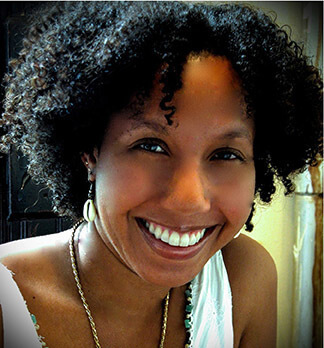Born in the U.S. Virgin Islands, writer Tiphanie Yanique spins her debut novel from that country's rich history. The saga of one remarkable family across generations, Land of Love and Drowning draws from folklore as well as real-life events, and the result is a magical first novel. In a behind-the-book essay, Yanique explains how she combined the truth from old wives tales with the facts from history books to create a unique truth.
"The master race in front!” The shouting men barged onto the bus in their uniforms. The passengers shrunk down out of shock and fear as the men broke down the wooden sign that read “Coloreds” at the back of the bus. The men themselves were nonwhite, but their uniforms were those of the U.S. Army. This made what the men were saying very strange and very frightening. The bus driver ducked from behind the wheel and ran into the street.
In the U.S. Virgin Islands there are many stories about the anti-segregation disruption caused by the local men who served in the military during World War II. This one in particular is the story I was told about what happened when some of the men from the so-called West Indian Companies were stationed in New Orleans. My great uncle Sigurd Peterson Sr. and my grandfather Andre Galiber Sr. were both part of this civil disobedience. Sigurd was mostly Danish, but he had a brownish tinge to his skin, either from being born and raised in the Caribbean or because of the remaining diversity in his bloodline. Andre was mostly black, descended from Africans, but there were also Asians and white Europeans in his ancestry.
These soldiers, born in the U.S. Virgin Islands, had never experienced segregation before—certainly not in a formal way. Their shouts of “master race” was newly acquired jargon . . . a racist jargon to be sure, but shouted from their darker faces and Caribbean mouths it was subversive enough to get them put in jail or lynched. But actually, what race were these men anyway? Some of them seemed white. Others looked black. Yet they were declaring themselves to be of the same race.
That the men declared themselves the master race was peculiar because they were of mixed racial background. If they were of the master race, then it meant that everyone could be, perhaps that everyone was. These men tore down the sign of bigotry, but they didn’t erect another. Later, Jesse Owens, the African American gold medalist who at the time served in the state department as a sort of consultant on race relations, was brought in to calm the Virgin Islands soldiers and explain the reasoning behind segregation. The soldiers booed Owens until he had to be escorted out.
"An old wives’ tale is generally thought to come from myth and superstition, and so should be considered with derision. . . . In my family, however, it is the older women who are the historians."
As is the case with many former soldiers, no one wanted to openly talk about the conflicts they had. Sigurd and Andre never offered this story. But there was the story anyway, corroborated by many of the women who knew them. The soldiers had been twice segregated. Not only separated by white and black, they were also set aside in their own West Indian companies, segregated from the other American companies, the white and the black ones. They and their compatriots had participated in a vital struggle. I researched this episode and others in books I dug up in the library and found in the bookstores. But I first learned it from the wives, girlfriends and daughters of these men.
Land of Love and Drowning is narrated by the “old wives” of the island. They are the ones who receive and pass on the stories, including this one about the soldiers in New Orleans. An "old wives’ tale" is generally a label given to a story thought to come from myth and superstition, and so should be considered with derision. But worse, an old wives’ tale is one that is often considered false in part because it is told by old women.
In my family, however, it is the older women who are the historians. So in Land of Love and Drowning I made the old wives the authoritative narrators. Other narrators (a male, and two younger women) tell their versions. But it is the old wives who, because of their age, have a long view of the history and, because of their intimate relationships (lovers and mothers), have the deepest understanding of the community. They are not the always the political actors in the novel but they are the recorders. They are the historians.
I wrote many parts of Land of Love and Drowning based on the history I first learned from my grandmother. It is was the story of the male soldiers, my real ancestors, who helped me frame the novel within the political framework of the Virgin Islands becoming American. Virgin Islands soldiers fought aggressively and publically against Jim Crow—and they did so while in U.S. military uniform. These men in my family helped make a small part of history that sealed the Virgin Islands to Americanness. But I needed the old wives to tell me the history to begin with.
RELATED IN BOOKPAGE: Read our review of this book.






